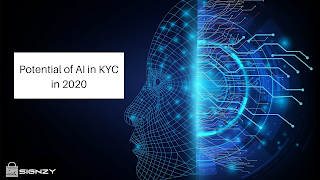Due to the coronavirus outspread; it has now been more than seven months since the whole world is struggling hard to fight against it. Earlier in January 2020, the RBI has released the notification on Video Based Digital KYC, allowing all the banks, and other financial institutes to use video KYC Verification methods to onboard the new customers from now onwards.
From then to now, several banks have been using this Video KYC. No wonders, it's working really great and giving some great results, with significant reductions in onboarding expenses, increases in competence, and customer acquisition.
This smart integration has, in fact, made millions of people to open their new bank accounts from the comfort of their homes only, digitally. It wouldn’t be wrong to say that in need of this hour, this Video KYC Verification method is not any less than a great coincidence.
In fact, right after seeing the success of this video KYC process in the banking and financial sector, both SEBI and IRDAI have introduced provisions in the form of VIPV and VBIP.
But, due to the novel nature of video-based onboarding, many things still abound regarding the execution and operational aspects of this video KYC process.
Video KYC Verification Process
Well, most commonly, it is preceded by Aadhar based verification digitally, involving capturing an image of the customer and verifying his or her Aadhar card online. However, this has come up as somewhat impractical. The new video-based KYC process envisages a video call between a representative and the customer, who is about to be onboard.
There are many facts associated with this Video ID KYC method that you guys must be somewhat aware of.
• Only banks can do online Aadhaar authentication
• Representatives must be appropriately trained to carry out video-based KYC method
• The video call must be triggered by the financial institution’s domain
• There must be concurrent audit
• The overall experience must be both, secure and seamless
• Banks and other financial institutes can use technologies like artificial intelligence and machine learning to improve the overall video based KYC process
Who performs video KYC with customers?
In video KYC, the customers are coupled with a qualified KYC expert, who interrogates and asks them to authenticate their identity by screening an administration-issued identity document as proof of their identity. All through the process, the KYC professional asks questions from the customer and observes their actions and body language as well to make sure that the person in front of the camera is not an impersonator or fraud.
Integrate a robust and trusted onboarding solution today
Now that you got to know all the perks this effective video KYC verification is offering, it is the time to integrate it into your business and see what it can do for you!
If you wish to onboard faster and make everything else go smoother with video KYC solution at great prices, feel free to have words with Signzy professionals.




